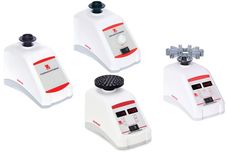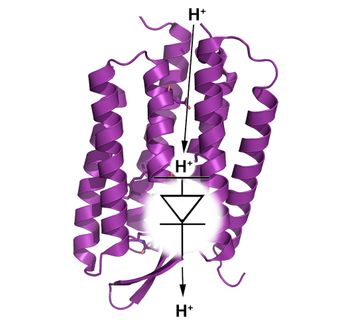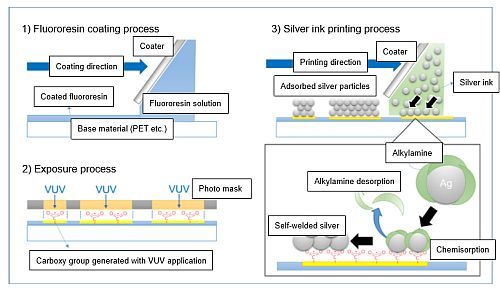Electromagnetic Miniatures
Simultaneous production of microchannels with parallel, electrically conducting metal wires
Magnetic components that can be controlled by the application of an external electric field are useful in many different applications. They can serve as microfluidic pumps, mixers, or valves in miniature lab-on-chip systems, or they can help in sorting and arranging magnetic particles. Biochemistry and cellular biology in particular benefit from many possible uses: for example, antibodies or other ligands that bind to individual biomolecules or to surface structures of cells can be coupled to magnetic beads in order to recognize and bind to their specific bonding partner even in complex mixtures. They can subsequently be fished out of the mixture with an electromagnet. Electromagnets have an additional advantage over permanent magnets: they can easily be switched on and off with an electric current. Also, the field strength can be adjusted to the desired value and can be changed as required. However, electromagnets do have the disadvantage of generating weaker magnetic fields, meaning that they must be very close to the place where they are to be used.
G. M. Whitesides and his co-workers at Harvard University in Cambridge, USA, have now developed an uncomplicated method for producing a microfluidic channel along with two metal cables parallel to it and only 10 µm away. First, a structure consisting of a 40-µm-wide and 40-µm-deep inner channel between two 120-µm-wide and 40-µm-deep outer channels was lithographically engraved into a polydimethylsiloxane resin. Treatment with 3-mercaptopropyltrimethoxysilane silanized the surfaces of the outer channels. This allowed them to be coated with molten solder that was poured into the heated forms in the next step. Upon cooling, the liquid metal solidified, forming two stable metal cables to the left and right of the inner channel. Application of an electrical field to these two wires generates magnetic fields of up to 2.8 mT within the central channel.
It was also possible to steer magnetic spheres through the channel: the scientists again made a channel with parallel wires on either side, but this time the channel forked after a few millimeters. A suspension of magnetic spheres flowed through the channel. If current was allowed to flow through wire on the right, the spheres flowed to the right as they reached the fork, and vice versa.
Original publication: George M. Whitesides et al.; "Cofabrication of Electromagnets and Microfluidic Systems in Poly(dimethylsiloxane)"; Angewandte Chemie International Edition 2006, 45, No. 41, 6877-6882.
Most read news
Organizations
These products might interest you

OHAUS Laboratory equipment by Ohaus
Do More with OHAUS Laboratory Equipment
Do Not Limit Yourself to Just Measurement! Discover Ingenious Portfolio

Mini Vortex Mixers by Ohaus
Your vortex mixer for perfect mixing in any application
Your durable laboratory assistant for everyday mixing and vortexing

Get the analytics and lab tech industry in your inbox
By submitting this form you agree that LUMITOS AG will send you the newsletter(s) selected above by email. Your data will not be passed on to third parties. Your data will be stored and processed in accordance with our data protection regulations. LUMITOS may contact you by email for the purpose of advertising or market and opinion surveys. You can revoke your consent at any time without giving reasons to LUMITOS AG, Ernst-Augustin-Str. 2, 12489 Berlin, Germany or by e-mail at revoke@lumitos.com with effect for the future. In addition, each email contains a link to unsubscribe from the corresponding newsletter.
More news from our other portals
See the theme worlds for related content
Topic world Antibodies
Antibodies are specialized molecules of our immune system that can specifically recognize and neutralize pathogens or foreign substances. Antibody research in biotech and pharma has recognized this natural defense potential and is working intensively to make it therapeutically useful. From monoclonal antibodies used against cancer or autoimmune diseases to antibody-drug conjugates that specifically transport drugs to disease cells - the possibilities are enormous

Topic world Antibodies
Antibodies are specialized molecules of our immune system that can specifically recognize and neutralize pathogens or foreign substances. Antibody research in biotech and pharma has recognized this natural defense potential and is working intensively to make it therapeutically useful. From monoclonal antibodies used against cancer or autoimmune diseases to antibody-drug conjugates that specifically transport drugs to disease cells - the possibilities are enormous
























































